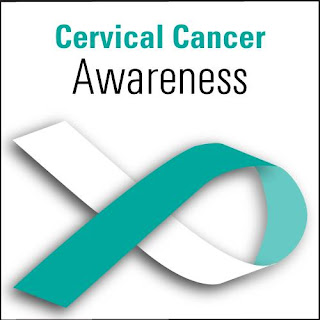CERVICAL CANCER
WHAT IS CERVICAL CANCER?
Beyond a woman’s vagina is the cervix which opens into the uterus (womb). The cervix is lined with cells. Cancer of the cervix or cervical cancer occurs when these cells change or start to grow abnormally and gain the ability of invading other body organs. This change from normal to becoming cancerous cells can take place over 10-20 years or more. More than 90% of cervical cancer patients are also usually infected with the Human Papilloma virus (HPV).
WHAT ARE THE RISK FACTORS?
WHAT ARE THE SIGNS AND SYMPTOMS?
Pre-cancerous cervical cells and cancer of the cervix often have NO symptoms. By the time symptoms appear, the cancer cells could already have spread. When symptoms do occur, the first signs may be frank vaginal bleeding, spotting before your period, or a watery discharge from the vagina. The bleeding may be heavier during your period or may occur after sex. Other signs of advanced cancer include lower abdominal pain, pain during sexual intercourse, problems on urinating, and swollen legs. Most advanced cancers of the cervix are found in women who have not had routine Pap smear tests.
HOW IS IT DIAGNOSED?
IS IT TREATABLE/CURABLE?
Cervical cancer can be prevented by reducing on exposure to the above listed risk factors. The good news is that if detected early, there is more than 90% chance of absolute cure. This is why routine Pap smear tests are very important. The exact treatment of cervical cancer is stage-dependent. Treatment options include Loop electrosurgical excision procedure (LEEP), Cryotherapy, Cone biopsy and Cauterization.
KEY POINTS TO NOTE:
Beyond a woman’s vagina is the cervix which opens into the uterus (womb). The cervix is lined with cells. Cancer of the cervix or cervical cancer occurs when these cells change or start to grow abnormally and gain the ability of invading other body organs. This change from normal to becoming cancerous cells can take place over 10-20 years or more. More than 90% of cervical cancer patients are also usually infected with the Human Papilloma virus (HPV).
WHAT ARE THE RISK FACTORS?
- Being infected with Human Papilloma virus (especially types 16 and 18). This is by far the greatest risk factor.
- Smoking
- AGE: Cervical cancer can occur at any age but is mostly seen in women over the age of 40.
- Young Age at First Sexual Intercourse (Onset of sex before 18 years of age increases the chance of getting Human Papilloma Virus (HPV).
- Having multiple sexual partners or having sex with someone who has multiple sexual partners
- Weak immune system e.g from HIV infection.
- Long-term use of oral contraceptives.
- Having ‘many’ (or multiple) pregnancies.
Pre-cancerous cervical cells and cancer of the cervix often have NO symptoms. By the time symptoms appear, the cancer cells could already have spread. When symptoms do occur, the first signs may be frank vaginal bleeding, spotting before your period, or a watery discharge from the vagina. The bleeding may be heavier during your period or may occur after sex. Other signs of advanced cancer include lower abdominal pain, pain during sexual intercourse, problems on urinating, and swollen legs. Most advanced cancers of the cervix are found in women who have not had routine Pap smear tests.
HOW IS IT DIAGNOSED?
- PAP SMEAR: is the preferred screening test. It tests for the presence of precancerous or cancerous cells on the cervix. A few cells are scrapped off the cervix and examined under a microscope.
- VISUAL INSPECTION WITH ACETIC ACID (VIA): This is done using dilute acetic acid (Vinegar) solution to highlight abnormal cells on the surface of the cervix.
- BIOPSY: A more advanced examination of the cells of the cervix.
IS IT TREATABLE/CURABLE?
Cervical cancer can be prevented by reducing on exposure to the above listed risk factors. The good news is that if detected early, there is more than 90% chance of absolute cure. This is why routine Pap smear tests are very important. The exact treatment of cervical cancer is stage-dependent. Treatment options include Loop electrosurgical excision procedure (LEEP), Cryotherapy, Cone biopsy and Cauterization.
KEY POINTS TO NOTE:
- Cervical cancer is a deadly disease. Globally, a woman dies of cervical cancer somewhere in the world every 2 minutes.
- Cervical cancer can be prevented and is curable when detected early.
- Pap smears/ Visual inspection with acetic acid are available to all women in Zambia free of charge and no appointment is required. All sexually active women (21-70 years old) should be screened for cervical cancer at least once every 3 years or once every year for HIV-positive women.



Comments
Post a Comment